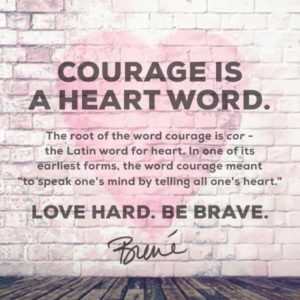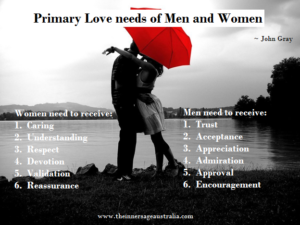Anxiety and fear are interrelated emotions, using the same or similar neurological pathways for processing information. Anxiety is the physical reactions that develop due to fear or stress. Fear can result as a response to anxious cues.
Either way anxiety and fear have become quite prevalent and widespread in today’s society and way of living. It is common, and even normal, from time to time to feel anxious and experience fear. In fact fear is our inbuilt response to external stimuli that is designed to keep us safe. Anxiety can help us to take action and to make informed decisions.
The problem occurs however when such feelings or physical symptoms are so strongly associated with that it becomes consuming and takes the person into a spiralling state. So is fear and anxiety a friend or foe?
When we stop, deny or repress an emotion we actually block the neural pathway that also allows the feel good chemicals, and thus emotions, to flow. Rather than stop, deny or repress such emotions we need to treat them as “friends” and dissolve them.
As previous mentioned we are naturally inbuilt with a fight or flight response. The aim of such response is to keep us safe and alive, which is our primal goal in life. So fear, and anxiety, from that perspective is extremely beneficial. You really wouldn’t want to come across a Coastal Eastern Taipan snake and be courageous and fearless.
Yet too from an emotional or spiritual perspective fear and anxiety have a positive reason for existing. Ultimately they are endeavouring to get our attention as there is a contradiction as to where we are directing our thoughts and energy with what is constructive and advantageous for us. It is telling us we are energetically misaligned.
Candace Pert, a neurophysicist, through her research showed that emotions create peptides that connect / dock in the receptors of cells throughout the body. Thus emotions are creating physical reactions in the body. As noted before we know that fear often creates symptoms of anxiety.
So fundamentally when it comes to fear, and anxiety, we need our brain to be communicating more appropriately and in a way that serves us. Perhaps we need to consider the reason the fear (or anxiety) is showing up and what it is endeavouring to get our attention for.
We know that the unconscious mind’s role is to keep us safe. To look out for dangers and direct us to act in a way that keeps us alive and out of dangers way. However often its reference of what is “safe” is based on historical data that is most likely outdated and no longer supporting or serving us.
It is also important to understand that as mammals we want to belong. Consider mammals in the wild, their safety and ability to remain alive is dependant on being accepted in the group. If not they are shunned to the perimeter of the group where they are more likely to be taken by predators.
So often our fear is due to not wanting to be different, and thus not shunned, by others. So we act in a way that our “group” does (which can be family, friends, colleagues) and/or in a way that we consider they will find acceptable.
Did you know that fear and excitement use the same energy? What happens thought is most people tend to misread excitement as fear, thus sabotaging themselves from taking action and enabling change.
Being fearful creates a misconception that we do not have choice, which debilitates us from making change. Also it is likely the old way of being has been acted upon for such a long time that it has created a strong neural pathways hence why we often act without thinking.
Most of our patterns of behaviour are created in the unconscious mind between the ages of two and seven. The way to change these patterns, and create new pathways, is repetition.
What precedes change and choice is awareness. Awareness of how your fears are causing you to act and disempower you. Once we have awareness we then have choice to either repeat the pattern of behaviour or to create change and new behaviour.
We need to know that the unconscious mind will endeavour to keep the old patterns because it considers them safe. This is the reason change can be less than easy. However more you disengage with the old pattern and act in the new way you minimise and disempower the old way of acting.
Thus in order to address anxiety, ideally you would address the fears that are underpinning or causing it. To do this you need to uncover what are the beliefs that create the fear and start acknowledging or creating references where the opposite is true.
Everyone’s anxiety experience of anxiety is different. Anxiety symptoms are real, headaches, dizziness, trembling, sweaty, unsettled stomach or nausea, feeling faint, shaky and breathing difficulties are a few.
What people tend to do is focus on the symptoms rather than them simply being a way to get the person’s attention. It is also important to consider that your anxiety symptoms could be a pattern of how you are keeping yourself “safe”. Thus you are unconsciously doing this because it is habitual.
I believe that emotions are not bad, they are showing up for a reason. Therefore it is important to dissolve the emotion rather than run or hide from it. So firstly acknowledge that you are feeling anxious and that it is ok for you to feel that way, as long as you don’t let it spiral you down.
Next bring awareness to what it is you were focusing on, thinking or talking about. For me I can wake up feeling this way and I’ve come to realise it can be due to a dream I was having or something I was thinking about before going to bed.
Then consider what is it you need in order to feel better and/or what is the solution to what you were thinking about or focusing on.
Another technique to help alleviate anxiety, in order to work on the underlying fears, is the 4-7-8 breathing pattern. This is a breathing rhythm developed by Dr. Andrew Weil, based on ancient yogic pranayama technique. It helps to oxygenate the body which helps to calm the nerves, relaxing and centring the body.
Breathe in for a count of four, hold for a count of seven and breathe out for a count of eight. Continue doing this for a min. of four rounds and as you get more comfortable with the technique you can do so for up to eight rounds.
As a kinesiologist I have seen many clients use kinesiology techniques to help support them dissolve fears and thus anxiety. Helping them to be stronger within themselves. The great thing about kinesiology is that it doesn’t use a “one size fits all” approach, it uses the wisdom of your internal healing system to find out specifically what you need.
So is fear and anxiety friend or foe? Ultimately I believe it is a friend, one that can be “cruel to be kind”. Just wanting our attention so that we are congruent within ourselves to create what we truly want and are capable of achieving.



 As our children enter school their beautiful, curious, child-like brain becomes jam packed with knowledge and information. Sir Kenneth Robinson, an international adviser on education, says “we educate people out of their creativity”.
As our children enter school their beautiful, curious, child-like brain becomes jam packed with knowledge and information. Sir Kenneth Robinson, an international adviser on education, says “we educate people out of their creativity”. Mark Nepo said “No amount of thinking is going to stop you from thinking” so in order to break the overthinking habit you need to consider actions which aren’t engaging your thought processes. You also want to consider actions which will create the positive neural pathways which allow you to access your “sensible” brain; the neocortex. Actions such as:
Mark Nepo said “No amount of thinking is going to stop you from thinking” so in order to break the overthinking habit you need to consider actions which aren’t engaging your thought processes. You also want to consider actions which will create the positive neural pathways which allow you to access your “sensible” brain; the neocortex. Actions such as:
 ng that time and that whilst I can easily justify self-righteous anger, blame, and resentment, I came to realise that such a position only kept me connected to, and as a victim, of the other party.
ng that time and that whilst I can easily justify self-righteous anger, blame, and resentment, I came to realise that such a position only kept me connected to, and as a victim, of the other party. Steps to Forgiveness
Steps to Forgiveness 






 cation Assertion: This technique is typically used when you have used one or both of the previous methods and the person continues of disregard your needs and wants.
cation Assertion: This technique is typically used when you have used one or both of the previous methods and the person continues of disregard your needs and wants.

 ow filled, we are not able to love to our full capacity.
ow filled, we are not able to love to our full capacity.